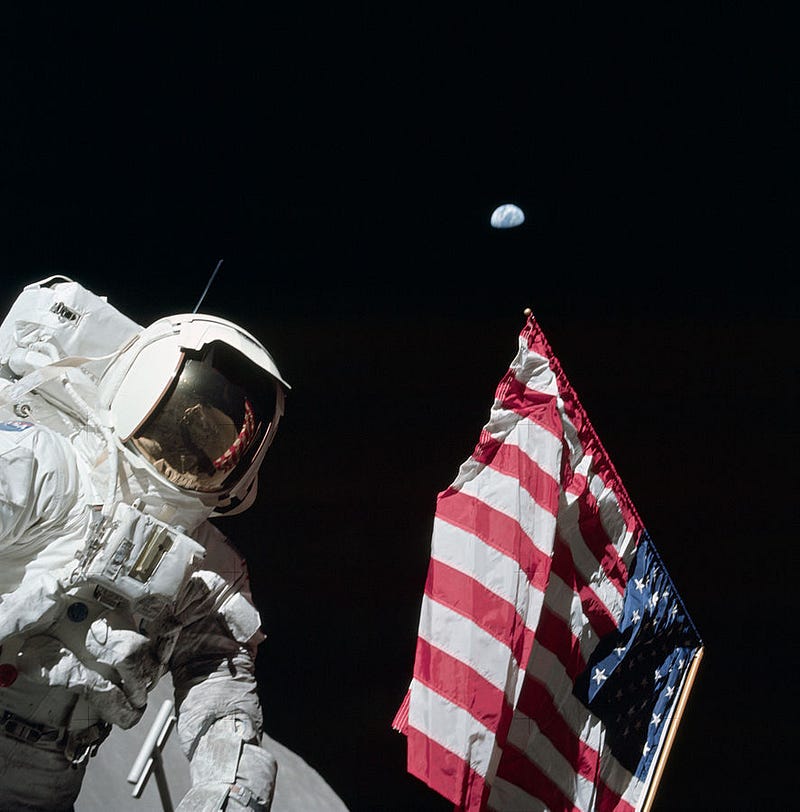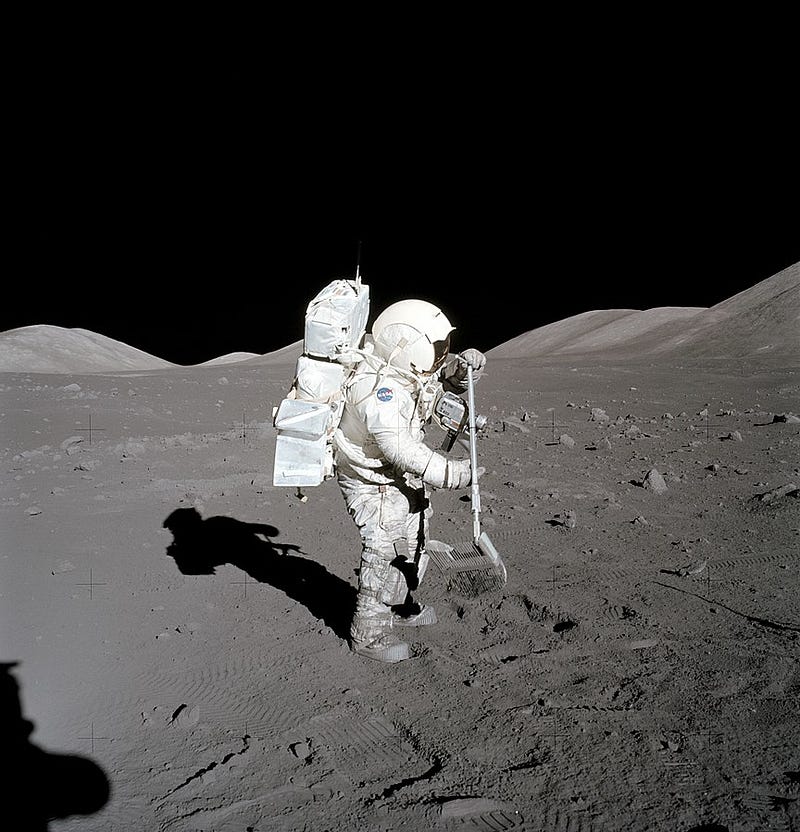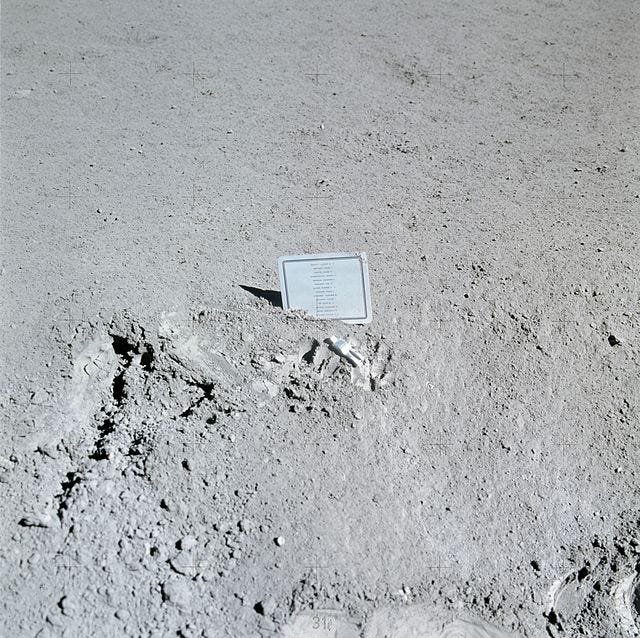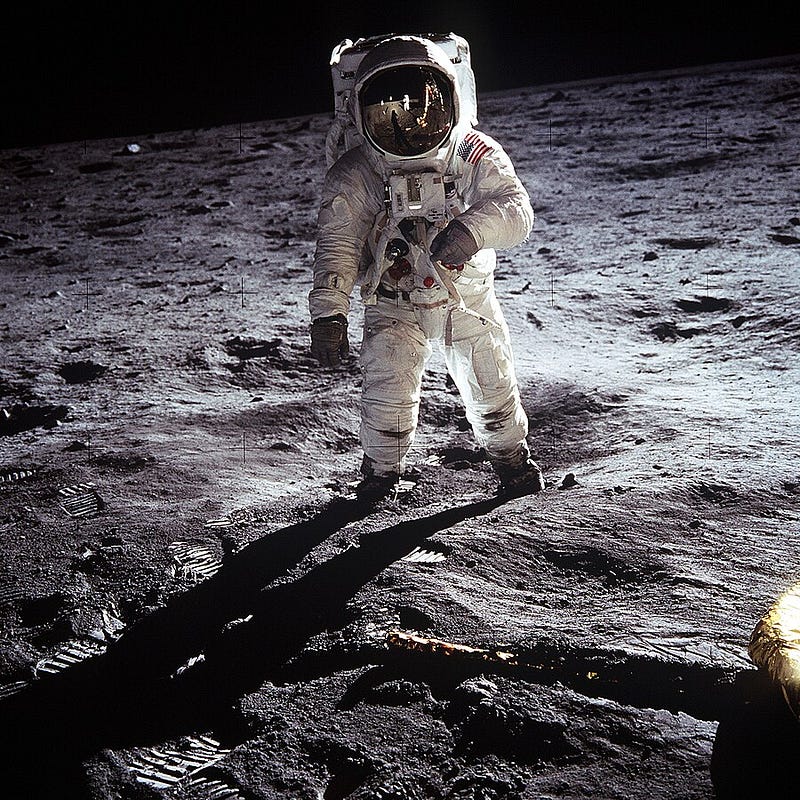# Human Influence on the Moon: From Golf Balls to Artifacts
Written on
Chapter 1: Recognizing the Lunar Anthropocene
It is essential to acknowledge that humanity has emerged as a primary force shaping the lunar landscape. We are entering a new geological era, termed the lunar Anthropocene, characterized by the presence of not just spacecraft remnants but also human refuse, golf balls, and photographs scattered across the Moon's surface.

Many people still perceive space as untouched wilderness. While that may be accurate when gazing at the vast cosmos, human exploration of the Solar System is intensifying, particularly on the Moon, where the natural environment is being altered significantly.
The Beginning of Lunar Alteration
Human interaction with the Moon commenced on September 13, 1959, with the Soviet spacecraft Luna 2, marking the first disturbance of lunar dust. Over the following years, more than a hundred spacecraft, both crewed and uncrewed, have either landed or crashed onto the Moon's surface.
The American manned missions from 1969 to 1972 had the most profound effects, introducing numerous Earthly items that now reside on the lunar surface. Researchers have documented this substantial human activity in the scientific journal Nature Geoscience and have warned that forthcoming missions could further transform the Moon's appearance.
According to researchers at the University of Kansas, it is time to officially recognize that humans are the leading force in modifying the Moon's environment, advocating for the declaration of the lunar Anthropocene.

The Future of Lunar Exploration
The term "Anthropocene" originally described a proposed geological epoch on Earth, reflecting the significant human impact on global ecosystems. Interestingly, this concept is now applicable to the Moon as well. Dr. Justin A. Holcomb, a leading author from the Kansas Geological Survey, noted that "Cultural processes are beginning to dominate over the natural geological processes on the Moon."
He explained that activities like the movement of rovers and landers significantly disrupt the lunar regolith, in addition to natural phenomena like meteoroid impacts. With the current pace of space exploration, the lunar landscape is expected to look entirely different in just five decades.
"Our aim is to spark a conversation about the human footprint on the Moon before irreversible changes occur," Dr. Holcomb emphasized.

The Moon as a Dumping Ground
Humanity’s space endeavors have not adhered to the principle of minimizing environmental impact. Evidence from lunar missions illustrates this concern, as the Moon's surface is littered with "discarded spacecraft parts, bags of human waste, scientific instruments, and various artifacts, including flags, golf balls, and photographs."
The authors of the study pointed out that while the Moon may lack an atmosphere or magnetic field, it possesses a fragile exosphere made up of dust and gases, which is vulnerable to contamination from spacecraft activities. It is crucial that future missions take steps to reduce their negative effects on the lunar environment.

Lunar Heritage and Archaeology
By initiating discussions about the lunar Anthropocene, scientists hope to raise awareness of the potential adverse effects of human activities on this celestial body. They also aim to emphasize the importance of protecting historically significant sites that currently lack legal safeguards.
For instance, the landing site of Apollo 11 from 1969 still contains remnants of the Lunar Module, Eagle. Experts liken these lunar remnants to archaeological records found on Earth. "As archaeologists, we perceive the footprints left by Apollo astronauts on the Moon as an extension of humanity's journey from Africa, marking a pivotal moment in our species' history," Dr. Holcomb stated.
Thus, these remnants qualify as archaeological treasures that require preservation. Upcoming lunar missions, particularly NASA's Artemis program, could greatly influence the Moon's environment, especially with plans for a lasting human presence on its surface.
Artemis, a Greek goddess, has been symbolically embraced by NASA, representing both the hunt and the protection of life.
Attention all readers!
As content creators on Medium.com, we often receive minimal compensation for our efforts. If you appreciate my work, please consider supporting me on my "Buy Me a Coffee" page. Your contributions can significantly aid in fueling my passion for producing quality content. Thank you for your support!

